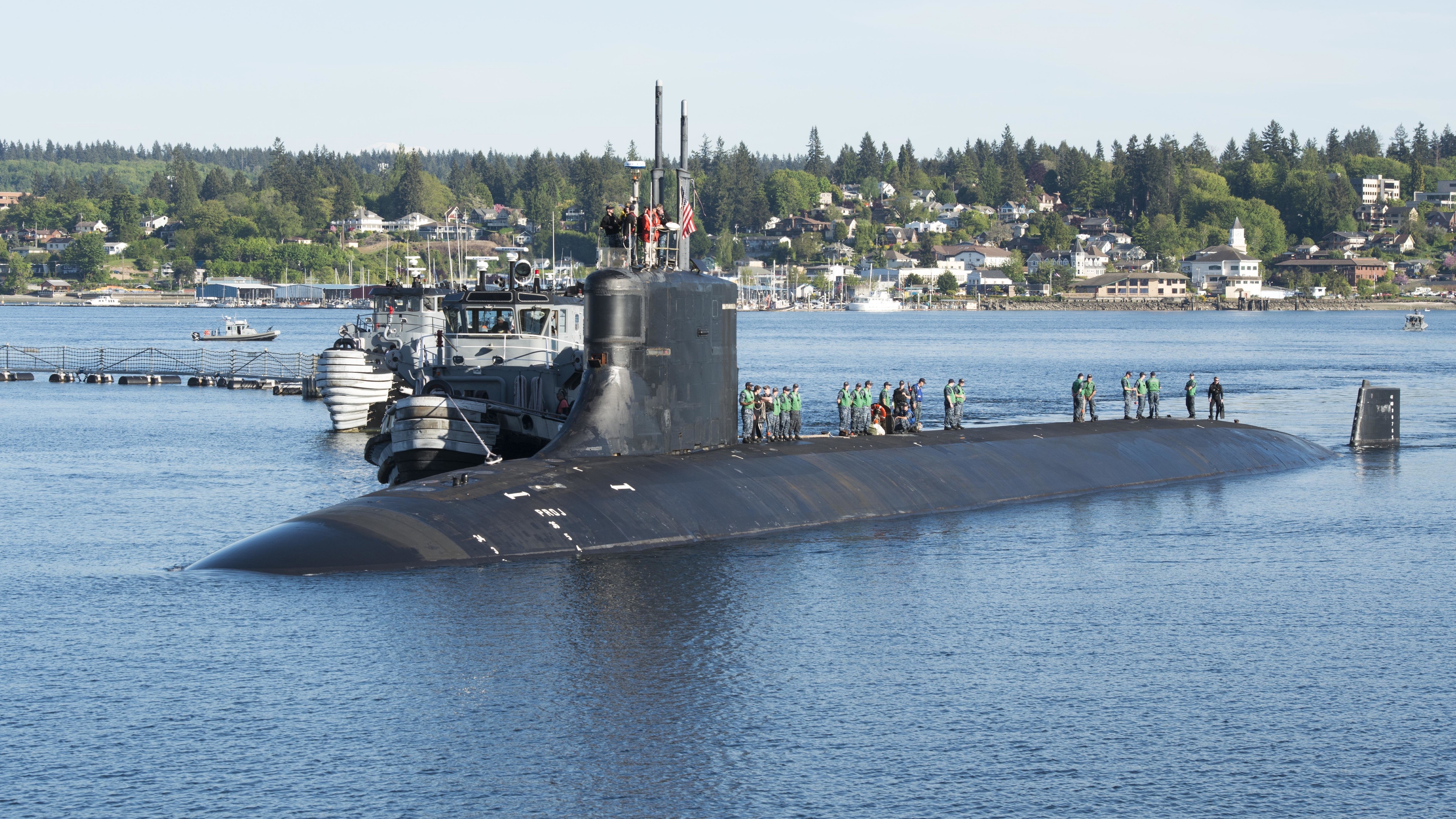Nuclear-powered US submarine collided with a hidden underwater mountain, Navy reveals
Around a dozen crewmembers were injured in the incident.

A nuclear-powered U.S. submarine that ran aground in the South China Sea last month collided with an uncharted seamount, according to a U.S. Navy investigation.
The USS Connecticut, a Seawolf-class fast-attack submarine, collided with an unknown object in international waters on Oct. 2, causing minor to moderate injuries to 11 crewmembers, NPR reported. The damaged submarine surfaced and made it to a port in Guam unassisted. The Navy hasn't disclosed the full extent of the damage, and all the Navy said about the incident at the time was that "it was not another submarine" that had collided with the vessel, The Associated Press reported.
But the new report, released by the U.S. 7th Fleet on Nov. 1, has "determined that Connecticut grounded on an uncharted seamount."
Related: The 20 most mysterious shipwrecks ever
Seamounts, or underwater mountains, are remnants of extinct underwater volcanoes. A majority of seamounts are cone-shaped, but some — known as guyots — have large, flat summits. Seamounts are biological hotspots for marine life because their steep sides encourage the upwelling of nutrients from the deep sea and provide a place for sessile organisms, like corals and sponges, to settle and grow, according to the National Oceanic and Atmospheric Administration (NOAA).
More than 100,000 seamounts of at least 3,281 feet (1,000 meters) may dot the ocean floor, but scientists have mapped less than 0.1% of them, according to NOAA
In 2005, the USS San Francisco, another nuclear-powered attack submarine, hit an uncharted seamount in Guam at a top speed of 30 knots (34.5 miles per hour), which injured almost all of the 137-person crew and killed one, according to Popular Mechanics.
Sign up for the Live Science daily newsletter now
Get the world’s most fascinating discoveries delivered straight to your inbox.
Originally published on Live Science.

Harry is a U.K.-based senior staff writer at Live Science. He studied marine biology at the University of Exeter before training to become a journalist. He covers a wide range of topics including space exploration, planetary science, space weather, climate change, animal behavior and paleontology. His recent work on the solar maximum won "best space submission" at the 2024 Aerospace Media Awards and was shortlisted in the "top scoop" category at the NCTJ Awards for Excellence in 2023. He also writes Live Science's weekly Earth from space series.









